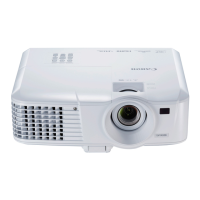25
ENGLISH
Connecting Video source devices
You can connect your projector to various Video source devices that provide any one of the following
output sockets:
• HDMI
• Component Video
•S-Video
• Video (composite)
You need only connect the projector to a Video source device using just one of the above connecting
methods, however each provides a different level of video quality. The method you choose will most
likely depend upon the availability of matching terminals on both the projector and the Video source
device as described below:
HDMI (High-Definition Multimedia Interface) supports uncompressed video data transmission between
compatible devices like DTV tuners, DVD players and displays over a single cable. It provides pure
digital viewing experience. See "Connecting an HDMI device" on page 26 for how to connect the
projector to an HDMI device.
Digital TV tuner and DVD players output Component Video natively, so if available on your devices, this
should be your connection method of choice in preference to (composite) Video. See "Connecting a
Component Video source device" on page 27 for how to connect the projector to a component video
device.
If you have both composite Video and S-Video output terminals on your Video source device, you should
elect to use the S-Video option. See "Connecting an S-Video source device" on page 28 for how to
connect the projector to an S-Video device.
If you have only composite Video output terminals on your Video source device, connect to Composite
Video input. See "Connecting a composite Video source device" on page 29 for how to connect the
projector to a composite Video device.

